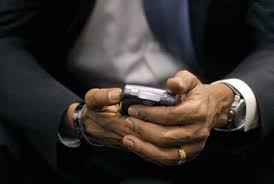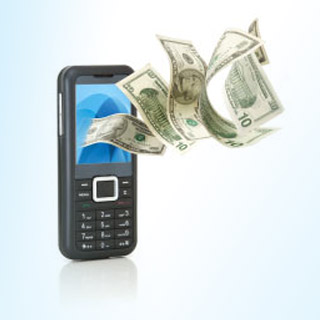We’re in the midst of yet another technological revolution slated to be bigger than that of the TV or PC and marketers will be faced with how to most effectively deal with it.

The new market is Mobile and it is about to change everything.
No longer will the customer be found tethered to a TV or PC screen, perfectly positioned to receive a marketer’s message on the marketer’s terms. The Mobile consumer is on the move, on location, and the marketer will have to find where their customers aggregate in this new digital landscape and how to interact with them by adding value.
It’s not the lean back of TV or the lean forward of the PC, but rather the lean very forward of Mobile. It’s up close and it’s personal. Mobile customers are doing a lot more than talking on their phones, based on the latest Pew Research Center study Mobile Access 2010:
- The majority (54%) have sent a photo or video
- More than a fifth (23%) have accessed a social networking site
- A fifth have watched a video
- Eleven percent have purchased a product
- Eleven percent have made a charitable donation
These Mobile activity indicators are barely the tip of the iceberg of what Mobile is doing to the marketing landscape. More than 13 million people accessed bank accounts through Mobile sites in one month and more than five million people are using banking apps, according to comScore. And that’s just one industry.
The size and scope of Mobile cannot be underestimated. By 2013, there will be roughly five billion mobile subscribers worldwide, according to noted research firm IDC. And global enterprises will be impacted in even more profound ways.
For example, nine out of 10 Mobile users in China text on their phones, based on research conducted by Sybase 365. In the U.S. market, they found only 13 percent use Mobile commerce and customer relationship management (CRM) solutions. While that’s slightly higher than Canada, nearly half of those in China already use such systems.
In Japan, consumers are accustomed to swiping cell phones rather than credit cards for payment and in South Korea free Mobile TV has been around for five years and broadcasters there say almost 30 million people watch TV regularly from their phones.
Many of the large brands already have been experimenting with Mobile while many are taking a wait and see approach. In a Mobile marketing study we conducted at the Center for Media Research at MediaPost Communications, 41 percent of those not yet doing Mobile campaigns do not plan to in the foreseeable future. Another study by Acquity Group showed that only 12 percent of the top 500 retailers had sites optimized for Mobile phones.
The time for marketers to get into Mobile is now. It is the wave so you can be on it or under it.
- What is the overall Mobile strategy of the business?
- Where do your Mobil customers aggregate and what Mobile platforms do they use?
- What role does your CIO or IT department play in this? Are they onboard?
- Can your point of sale system or rewards program be integrated and maximized for your Mobile customers?
- How do you plan to deal with your customers on location?
And those are only some of the questions that need to be addressed.
Mobile marketing is not about providing coupons and discounts, it’s about determining how you will interact with your customers when and where they want and defining the future of your brand in the Mobile environment.
Chuck Martin
Chuck Martin is a New York Times business bestselling author and was the founding Publisher of Interactive Age, the first publication to launch in print and on the Web simultaneously. He is Director of the Center for Media Research, MediaPost, in New York and former Vice President of IBM’s publishing and advertising division. He is the Co-Publisher and Editor in Chief of Social Media Marketing Magazine. He is currently writing a soon-to-be published book on Mobile.
 We’re in a state of mobile transition.
We’re in a state of mobile transition. Sitting in a Starbucks recently, we watched as a couple handed their iPhone to a toddler sitting in a stroller with them next to their table. They then continued their conversation with each other as the young child intently played with the phone.
Sitting in a Starbucks recently, we watched as a couple handed their iPhone to a toddler sitting in a stroller with them next to their table. They then continued their conversation with each other as the young child intently played with the phone. A recent study forecasting enormous growth in mobile payments for digital and physical goods comes as no great surprise.
A recent study forecasting enormous growth in mobile payments for digital and physical goods comes as no great surprise.
 Looking to travel from the east to the west coast recently, I decided to take a look outside my normal coast-to-coast airlines United and American Airlines.
Looking to travel from the east to the west coast recently, I decided to take a look outside my normal coast-to-coast airlines United and American Airlines. Walking through Sears today I happened to come across a couple looking at a Kitchen Aid mixer, with the price of $199 prominently posted. The man pulled out his smartphone, read the barcode and told his partner “it’s cheaper at Best Buy. Let’s go.” And they left Sears, presumably headed to Best Buy. Out of curiosity, I loaded one of my trusty barcode reader apps (in this case,
Walking through Sears today I happened to come across a couple looking at a Kitchen Aid mixer, with the price of $199 prominently posted. The man pulled out his smartphone, read the barcode and told his partner “it’s cheaper at Best Buy. Let’s go.” And they left Sears, presumably headed to Best Buy. Out of curiosity, I loaded one of my trusty barcode reader apps (in this case, 